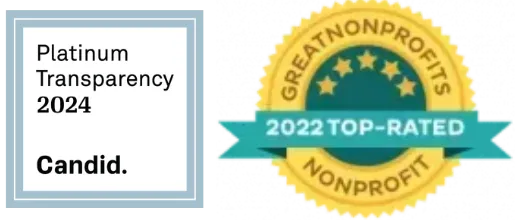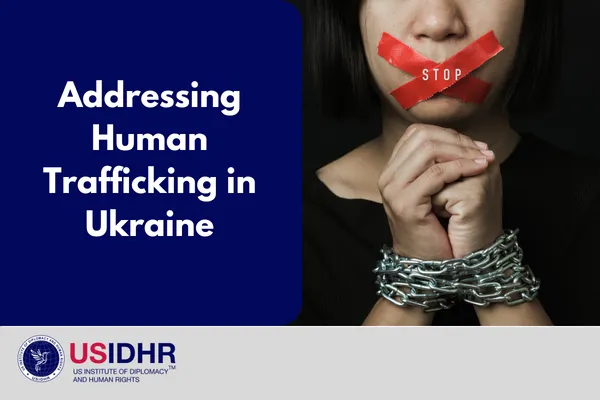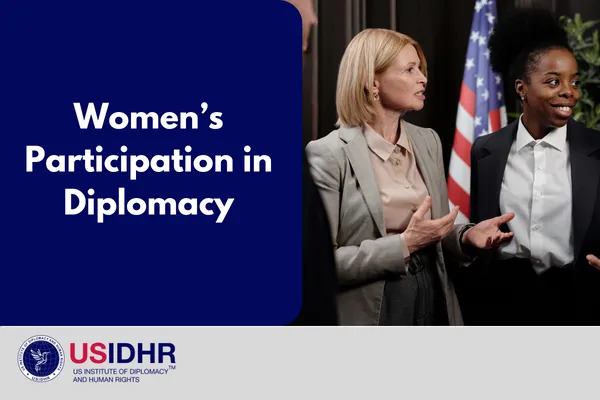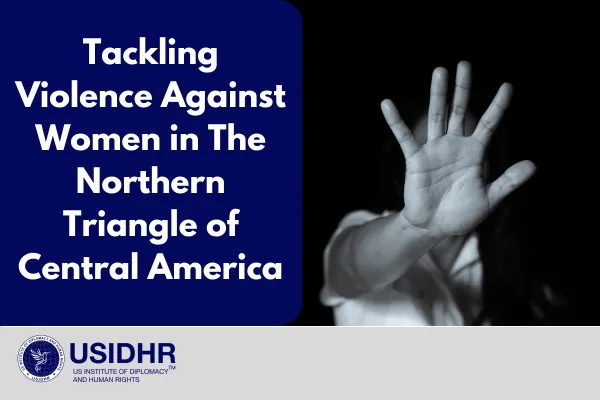
Tackling Violence Against Women in The Northern Triangle of Central America (NTCA)
November 14, 2021 by usidhr.org
7 min read
The Northern Triangle of Central America (NTCA) – which consists of El Salvador, Guatemala, and Honduras – is the most violent region in the world (Verite, 2014). El Salvador, Honduras, and Guatemala respectively have some of the highest homicide rates globally – with the highest homicide rate in the world (82.84%), the second-highest (56.52%), and the 14th highest (27.26%) respectively (World Population Review, 2021). A deeper issue is that perpetrators target women and girls based on their sex and gender. Sexual and gender-based violence – including femicides (international murders of women for being women) – plagues the NTCA. El Salvador (3.3 per 100,000 women) and Honduras (6.2 per 100,000 women) are among the top five countries with the highest femicide rates (Kennon and Valdevitt, 2020). Guatemala, which had a femicide rate of 7 per 100,000 women from 2010 to 2015, is not much better (Horizons of Friendship, 2018). Rampant violence in the NTCA, including domestic violence, forces women and girls to seek asylum in the US and Mexico. As the assistant high commissioner for protection at the United Nations High Commissioner for Refugees (UNHCR) stated, there is a “hidden refugee crisis” within the migration (Moloney and Thomas Reuters Foundation, 2017). This article explores the factors contributing to violence against women and girls in the NTCA.
Contributing factors to violence against women
The NTCA is home to many violent gangs, including the maras. Decades of civil war and political instability (including during the Cold War) enabled the gangs, among whom the Mara Salvatrucha (MS-13) and the Eighteenth Street Gang (M-18) are particularly infamous, to grow powerful. These groups brutally kill, assault, rob, and extort people (Cheatham, 2021; Seelke, 2014; World Bank, 2011). Together, MS-13 and M-18 have 85,000 members. According to a 2017 Latinobarometro survey of NTCA respondents, 70% considered gang violence one of the worst types of violence in the region, and 46% had the same opinion about violence against women (Runde and Schneider, 2019). According to the Inter-American Dialogue’s research, a 1% increase in homicides contributes to migration from Honduras, Guatemala, and El Salvador growing by 120%, 100%, and 188% respectively (Orozco, 2018). By 2018, MS-13 was active in 94% of El Salvador’s 262 municipalities (Crisis Group, 2018). According to Melida Guevara, an Oxfam program manager in El Salvador, “Gang violence exercises power over women by means of violence over their bodies. To resist is to die. So girls and young boys, some just 8 years old, are recruited to work for gangs or be girlfriends of gang members, and they are trying to survive in this complex and violent context.” (Oxfam America 2018).
According to the UNHCR, 85% of women from the NTCA seeking asylum in the US described living in communities that armed crime groups controlled – be it
maras or other groups. The women, in interviews, stated how they faced rape and abuse and lived amidst death and disappearances. 64% of interviewees described direct threats and attacks by criminal armed groups as ‘’at least one of the primary reasons for their flight’’, while 62% of respondents reported witnessing dead bodies in their communities, and many reported being forced to pay a ‘’tax’’ for living or working in a particular area. Although 69% tried to find safety in their country, they were unable to flee their perpetrators or found similar violence in their new locations. The crime gangs terrorized many women so deeply the latter ‘’increasingly’’ stayed and kept their children at home instead of going to school or work (UNHCR, 2015). It was the only way some young girls and women felt relatively safe (McEvers and Garsd, 2015).
Gangs were not the only perpetrators of gender-based violence against girls and women. The dangers could be further compounded if the women themselves were in abusive relationships at home, which was very much the case for many of the respondents (who faced ‘’life-threatening and degrading forms of domestic violence’’). In some cases, the domestic abuser was also part of the gang (UNHCR, 2015). According to a 2017 national survey, 67% of Salvadoran women have suffered some form of violence in their lifetime, be it sexual assault, intimate partner violence, or abuse from their own family. Yet only 6% of victims had reported abuse to authorities (UN, 2018). For comparison, the Bureau of Justice Statistics show that more than 50% of domestic violence survivors have reported cases to the police (Morgan, PhD, and Oudekerk, PhD, 2018). The primary cause for so extremely few reports may be lack of access to the necessary public services, according to the Secretary of Social Inclusion. Responses to The National Survey of Violence against Women indicate 15% of surveyed women didn’t think the police would believe them, 11.5% were threatened to not report at all, and 9% did not know where to go – in addition, among all the reported cases, only 6% of the real support has been provided. 48% of the cases involved not reporting due to the difficulty in accessing public services (Laguan, 2018).
In addition, 60% women looking for sanctuary outside the NTCA consistently
stated they received little to no protection from the police in spite of reporting attacks and threats, and 40% did not bother and thought it would be pointless because the police failed to help family members or friends who made reports or simply could not intervene in neighborhoods that criminal armed groups firmly controlled. In some cases, as 10% of the interviewees stated, the police themselves were even abusers or colluding with the criminal groups. Additionally, women who or whose family members worked for the police said refusing to collaborate with the maras resulted in gang members threatening and attacking them or theirs (UNHCR, 2015). Conviction rates are incredibly low and prosecutors have to fear retaliation from perpetrators. Out of 3,000 murders of women between 2012 and 2019 in El Salvador, only 8.6% resulted in convictions. This number is not very different for Guatemala (1 to 2%) or Honduras (5%). In fact, that the man who murdered journalist Karla Turcios received conviction at all was a rare event (Guzmán and Cáceres 2020; Walsh and Menjívar, 2016; OHCHR 2014; Moloney, 2020). Her murder, which happened in 2018 and grabbed national headlines, prompted the government to
declare femicide a matter of national urgency (BBC, 2018).
In surveys, 1/4th of El Salvadoran households reported having been victims of crime in 2017 (Macias, Rodriguez, and Zechmeister 2018). The government institutions are also highly corrupt. Guatemala and Honduras in particular are among the top third most corrupt countries (ranking 149th and 157th out of 180 respectively with scores of 25/100 and 24/100 – the lower the score, the more corrupt the country), with El Salvador faring better (104th out of 180, though still holding a score of 36/100). All three nations have seen top government officials, including Presidents, face charges or trial for drug trafficking or corruption. In addition, all three ranked below 40 out of 100 in terms of government effectiveness and rule of law. (Call 2021; Lakhani 2018; Finnegan 2021; AP News 2021; Transparency International 2020; Willis and Seiz 2019; Worldwide Governance Indicators 2019). According to Freedom House, Honduras, Guatemala, and El Salvador have global freedom scores of 44, 52, and 63 respectively – Honduras scored a 19/40 in Political Rights and 25/60 in Civil Liberties, Guatemala a 21/40 and 31/60 respectively, and El Salvador a 30/40 and 33/60 respectively (Freedom House Global Freedom Scores 2021). Freedom House cites organized crime (including crimes against journalists, political activists, and women), corruption, and impunity as reasons for such low scores (Freedom House Guatemala 2021; Freedom House El Salvador 2021; Freedom House Honduras 2021).
The impact of Covid-19
There is reason to believe widespread lockdowns during the COVID-19 pandemic have exacerbated the dangers of violence and abuse. Women and girls find themselves trapped with their abusers longer, making it harder to report abuse or seek help. Increased stress associated with the pandemic has also led to a rise in abusive behavior on the part of spouses. In addition, criminal gangs have exploited coronavirus lockdowns to control local communities more tightly, including the ‘’stepping up of extortion, drug trafficking and sexual and gender-based violence, and using forced disappearances, murders, and death threats against those that do not comply’’ according to UNHCR. The loss of formal and informal jobs (including businesses), combined with limited access to necessities like clean water and healthcare, has pushed women and girls to turn to activities like sex work to make ends meet – activities where the risk of exposure to gang violence is even greater (UNHCR 2020; UNHCR 2020).
What can be done to decrease this violence?
The NGO Cure Violence has achieved great successes in managing intervention programmes in some parts of San Pedro Sula (a city in Honduras) which for many years had the highest homicide rates among cities in the world (to the point that violence had become a fact of life for those living in the city). Cure Violence treats violence like a transmissible disease that spreads through exposure, anticipates the most likely sites of violence, intervenes before it actually breaks out, identifies the ‘’highest potential transmitters’’, works to change their behaviors, and influences social norms to discourage violence. Shootings and killings in the 3 zones implementing the model in 2014 fell by 73% within a 9-month period (compared to the same 9-month period in 2013). Early in 2015, shootings and killings in 5 program zones fell by as much as 88%, with one site going 17 months without any shootings (Cure Violence 2016).
USAID’s Community-Based Crime and Violence Prevention Project has also
achieved notable victories in El Salvador. As a result of the project, murders reported fell by 40%, extortion and blackmail fell by 52%, and residents became 40% less significantly likely to avoid dangerous areas of the neighborhood out of fear of crime. Through the Project, USAID partnered with Creative Associates and RTI/CECI, organizations that worked to address violence through providing entrepreneurship and vocational training for youth, jobs, supporting municipal governments in preventing violence and schools in establishing more chapters, counseling and psychological support for young people at risk and women survivors of domestic violence (Berk-Seligson, Ph.D., Orces, Ph.D., Pizzolitto, M.A., Seligson, Ph.D., and Wilson, Ph.D., 2014).
Dozens of groups in El Salvador have led a decades-long campaign to promote the rights of girls and women, including the women-run Shaira Ali Cultural Center. The Shaira Ali Cultural Center, which works to stop violence against women in rural Ahuachuapan, assists survivors in coming forward and reporting abusers to the authorities. The Center documents the specifics of each case of violence and, understanding that many women are afraid of filing complaints and do not trust the authorities, accompany survivors to the police and the attorney general’s office to ensure the former receive fair treatment and their cases receive a proper investigation. The organization worked in 29 communities to train women and students in violence prevention and also tutored other activists in implementing their own training processes (Oxfam 2018).
Oxfam, alongside groups including the Shaira Ali Cultural Center and the Association of Santa Tecla Women, educated students about basic rights and violence prevention in urban and rural schools across El Salvador – even ones in violent areas like Ahuachuapan. With Oxfam’s help, these schools developed student committees to promote financial literacy (which help young women be more independent), as well as ‘’coexistence’’ committees which raise rights awareness and teach students how to resolve conflict and prevent violence. A school director, Joel Mejia, had a lot of good things to say about the project outcomes, ‘’I’ve seen substantial changes. The students wash their hands, the boys respect the girls, and there has been a substantial reduction in conflicts at the school.’’ Karla Gutierrez, a Shaira Ali volunteer, noted the project enabled girls to ‘’now recognize when they are about to suffer harassment or violence, that when there’s touching involved, it’s a crime–especially when it’s a school director or teacher harassing them. They know that’s wrong.’’ Oxfam and other groups, through the Una vide diferente (A different life) program, also
trained 360 women in human rights and bolstered a national women-led human rights network that could push for legal reforms. The program also trained 165 government officials (including judges and police officers) from 2005 to 2007 and in 2008, 45 women legislators, in preventing violence. The women legislators later drafted the Gender-Based Violence Prevention and Eradication bill (Oxfam 2018, Oxfam 2010).
The humanitarian organization Plan International is also working alongside local governments in the NTCA to strengthen existing protections for survivors, even amidst the current pandemic. In addition to improving access to education and economic opportunities for girls and young women, Plan International has also been using virtual channels to provide information to NTCA women and girls on the support available to them, and has been supporting girls, boys, families, communities, and governments in coping with the impact of COVID-19. A key part of the organization’s approach involves seeing men and boys as essential allies against violence and educating boys about gender-based violence and positive masculinity at home (Plan International August 2020; Plan International May 2020).
Conclusion
Women and girls in the Northern Triangle of Central America (NTCA) face and suffer from tremendous violence on account of their gender at some of the highest rates globally and have little recourse to protection under the law – in contrast, those (ranging from individuals to family members and spouses to gangs) hat perpetrate violence against them rarely face punishment. It should not be this way – and it doesn’t have to be this way.
The US Institue of Diplomacy and Human Rights (USIDHR) works to counter misogyny and human trafficking through the Let Her Lead program. Recognizing that violence against women and girls is culturally ingrained and the likes of human traffickers prey on vulnerable young women with claims of safety, security, and happiness, USIDHR educates young women, educating them about economic development and their human rights, as well as help them spot the signs of human trafficking and gender-based violence so they can not only protect themselves but others too (USIDHR).
Reference list:
[1] Berk-Seligson, Susan, Ph.D., Diana Orces, Ph.D., Georgina Pizzolitto, M.A., Mitchell A. Seligson, Ph.D., and Carole J. Wilson, Ph.D. “Impact Evaluation of USAID’s Community-Based Crime.” USAID. August 2014. Accessed September 17, 2021. https://www.vanderbilt.edu/lapop/carsi/El_Salvador_v22_English_W_2_04.08.15.pdf
[2] “Corruption Perceptions Index 2020 for Honduras.” Transparency International. 2020. Accessed September 17, 2021. https://www.transparency.org/en/cpi/2020/index/hnd.
[3] “Countries and Territories.” Freedom House. Accessed September 17, 2021. https://freedomhouse.org/countries/freedom-world/scores.
[4] Clare R. Seelke, Gangs in Central America, Congressional Research Service, Publication No. RL34112, 7-5700 (20 February 2014).
[5] “Coronavirus Lockdowns in Central America, Exploited by Criminal Gangs | COVID-19 | UN News.” United Nations. November 25, 2020. Accessed September 17, 2021. https://news.un.org/en/story/2020/05/1064172.
[6] “COVID-19 Puts Thousands of Migrant Girls in Latin America at Risk of Violence and Exploitation.” Plan International. August 03, 2020. Accessed September 17, 2021. https://plan-international.org/latin-america/migracion-covid-19-eng.
[7] “El Salvador: Freedom in the World 2021 Country Report.” Freedom House. Accessed September 17, 2021. https://freedomhouse.org/country/el-salvador/freedom-world/2021.
[8] “Ex-President Formally Charged in El Salvador Corruption Case.” AP NEWS, Associated Press, 25 July 2021, apnews.com/article/caribbean-el-salvador-a08341e381055b2602fe1b335c1ff706.
[9] “Femicide or Feminicide.” Gender Equality Observatory. April 15, 2021. Accessed September 17, 2021. https://oig.cepal.org/en/indicators/femicide-or-feminicide.
[10] Finnegan, Conor. “Accused of Drug Trafficking, Honduran President a Critical Challenge for Biden’s Immigration Plans.” ABC News, ABC News Network, 30 Mar. 2021, abcnews.go.com/Politics/accused-drug-trafficking-honduran-president-critical-challenge-bidens/story?id=76678729.
[11] “Guatemala: Freedom in the World 2021 Country Report.” Freedom House. Accessed September 17, 2021. https://freedomhouse.org/country/guatemala/freedom-world/2021.
[12] “Gender-based Violence on the Rise during Lockdowns.” UNHCR. Accessed September 17, 2021. https://www.unhcr.org/en-us/news/stories/2020/11/5fbd2e774/gender-based-violence-rise-during-lockdowns.html.
[13] Guzmán, Valeria, and Gabriela Cáceres. “Feminicidios: Otra Pandemia Con Subregistro.” Elfaro. July 15, 2020. Accessed September 17, 2021. https://elfaro.net/es/202007/el_salvador/24636/Feminicidios-otra-pandemia-con-subregistro.htm.
[14] Herrera, Vienna. “Femicide in Honduras: Women Dismissed by Their Own Government.” Contra Corriente, 8 Aug. 2020, contracorriente.red/en/2020/08/08/femicide-in-honduras-women-dismissed-by-their-own-government/.
[15] “Honduras: Freedom in the World 2021 Country Report.” Freedom House. Accessed September 17, 2021. https://freedomhouse.org/country/honduras/freedom-world/2021.
[16] “How the Killing of Karla Turcios Changed El Salvador.” BBC News. November 26, 2018. Accessed September 17, 2021. https://www.bbc.com/news/av/world-latin-america-46324578.
[17] Hufstader, Chris. “Commitment to Justice and Support for Survivors of Violence.” Oxfam. November 13, 2018. Accessed September 17, 202
[18] Hufstader, Chris. “Una Vida Diferente: A Different Life.” Oxfam. March 21, 2011. Accessed September 17, 2021. https://www.oxfamamerica.org/explore/research-publications/una-vida-diferente-a-different-life/.
[19] Hufstader, Chris. “What’s behind the El Salvador Migration Crisis?” Oxfam. August 16, 2018. Accessed September 17, 2021. https://www.oxfamamerica.org/explore/stories/whats-behind-the-el-salvador-migration-crisis/.
[20] Laguan, Jonathan. “La Principal Causa Para No Denunciar La Violencia Contra La Mujer Es La Dificultad Para Acceder a Los Servicios Públicos: Vanda Pignato.” Noticias De El Salvador – La Prensa Gráfica | Informate Con La Verdad. May 03, 2018. Accessed September 17, 2021. https://www.laprensagrafica.com/elsalvador/La-principal-causa-para-no-denunciar-la-violencia-contra-la-mujer-es-la-dificultad-para-acceder-a-los-servicios-publicos-Vanda-Pignato-20180503-0032.html.
[21] Lakhani, Nina. “Guatemala’s Former Vice-President Jailed for 15 Years on Corruption Charges.” The Guardian, Guardian News and Media, 9 Oct. 2018, www.theguardian.com/world/2018/oct/09/guatemala-former-vice-president-jailed-15-years-corruption-case.
[22] “Life Under Gang Rule in El Salvador.” International Crisis Group. November 26, 2018. Accessed September 17, 2021. https://www.crisisgroup.org/latin-america-caribbean/central-america/el-salvador/life-under-gang-rule-el-salvador.
[23] Macias, Ricardo Cordova, Ph.D., Mariana Rodriguez, Ph.D., and Elizabeth J. Zechmeister, Ph.D. “The Political Culture of Democracy in El Salvador and the Americas, 2016/17 – A Comparative Study of Democracy and Governance.” USAID. May 2018. https://www.vanderbilt.edu/lapop/es/AB2016-17_El_Salvador_Country_Report_English_V6_01.25.19_W_01.29.19.pdf.
[24] Matthews, Hannah. “Guatemala: Two Women Murdered Every Day.” Horizons of Friendship. January 12, 2018. Accessed September 17, 2021. https://www.horizons.ca/blog/2018/1/3/guatemala.
[25] McEvers, Kelly, and Jasmine Garsd. “The Surreal Reasons Girls Are Disappearing In El Salvador: #15Girls.” NPR. October 05, 2015. Accessed September 17, 2021. https://www.npr.org/sections/goatsandsoda/2015/10/05/445985671/never-leave-your-house-survival-strategies-for-el-salvador-s-15girls.
[26] Moloney, Anastasia. “In Rare Conviction, El Salvadoran Man Gets Maximum Sentence for Femicide.” Reuters. January 31, 2020. Accessed September 17, 2021. https://www.reuters.com/article/us-el-salvador-women-trfn/in-rare-conviction-el-salvadoran-man-gets-maximum-sentence-for-femicide-idUSKBN1ZU2TK.
[27] Moloney, Anastasia. “Domestic Violence Pushes Central American Women to Flee for Their Lives: U.N.” Reuters. May 24, 2017. Accessed September 17, 2021. https://www.reuters.com/article/us-latam-migrants-refugees/domestic-violence-pushes-central-american-women-to-flee-for-their-lives-u-n-idUSKBN18K2FJ.
[28] “Murder Rate By Country 2021.” World Population Review. 2021. Accessed September 02, 2021. https://worldpopulationreview.com/country-rankings/murder-rate-by-country.
[29] “Progress Against Impunity? Guatemala‘s Femicide Law.” Edited by Kelsey Alford-Jones, Guatemala Human Rights Commission / USA, May 2009, www.ghrc-usa.org/Programs/ForWomensRighttoLive/2009VAWReport_execsum.htm.
[30] “Recent Trends in Central American Migration.” The Dialogue. May 14, 2018. Accessed September 17, 2021. https://www.thedialogue.org/analysis/recent-trends-in-central-american-migration/.
[31] “REPORT ON THE CURE VIOLENCE MODEL ADAPTATION IN SAN PEDRO …” November 2016. Accessed September 17, 2021. https://www.end-violence.org/sites/default/files/paragraphs/download/Report-on-the-Cure-Violence-Adaptation-in-San-Pedro-Sul.pdf.
[32] Runde, Daniel F., and Mark L. Schneider. “A New Social Contract for the Northern Triangle.” A New Social Contract for the Northern Triangle | Center for Strategic and International Studies. May 2019. Accessed September 17, 2021. https://csis-website-prod.s3.amazonaws.com/s3fs-public/publication/190507_RundeandSchneider_NTCA_pageproofs3.pdf.
[33] “Special Rapporteur on Violence against Women Finalizes Country Mission to Honduras and Calls for Urgent Action to Address the Culture of Impunity for Crimes against Women and Girls.” OHCHR. July 7, 2014. Accessed September 17, 2021. https://www.ohchr.org/EN/NewsEvents/Pages/DisplayNews.aspx?NewsID=14833&LangID=E URL.
[34] “Surge in Violence against Girls and Women in Latin America and Caribbean.” Plan International. May 19, 2020. Accessed September 17, 2021. https://plan-international.org/news/2020-05-19-surge-violence-against-girls-and-women-latin-america-and-caribbean.
[35] Unaccompanied Children.” Verité. December 13, 2016. Accessed May 01, 2021. https://www.verite.org/unaccompanied-children-violence-and-conditions-in-central-american-agriculture-linked-to-border-crisis/.
[36] “Un 67% De Las Mujeres Ha Sufrido Algún Tipo De Violencia En El Salvador | Noticias ONU.” United Nations. April 17, 2018. Accessed September 17, 2021. https://news.un.org/es/story/2018/04/1431372.
[37] Walsh, Shannon Drysdale, and Cecilia Menjívar. “‘What Guarantees Do We Have?’ Legal Tolls and Persistent Impunity for Feminicide in Guatemala.” Latin American Politics and Society 58, no. 4 (2016): 31–55. doi:10.1111/laps.12001.
[38] Women on the Run: First-Hand Accounts of Refugees Fleeing El Salvador, Guatemala, Honduras, and Mexico – A Study Conducted by the United Nations High Commissioner for Refugees (UNHCR)’’. UNHCR. 2015. https://www.unhcr.org/en-us/5630f24c6.pdf#zoom=95, 4-5.
[39] Worldwide Governance Indicators – Interactive Data Access. 2019. info.worldbank.org/governance/wgi/Home/Reports.
[40] Zanzinger, Kristina, et al. “Underreported and Unpunished, Femicides in El Salvador Continue.” NACLA, 5 Mar. 2021, nacla.org/news/2021/03/04/femicides-el-salvador-pandemic.
Join One of Our Certificate Trainings:
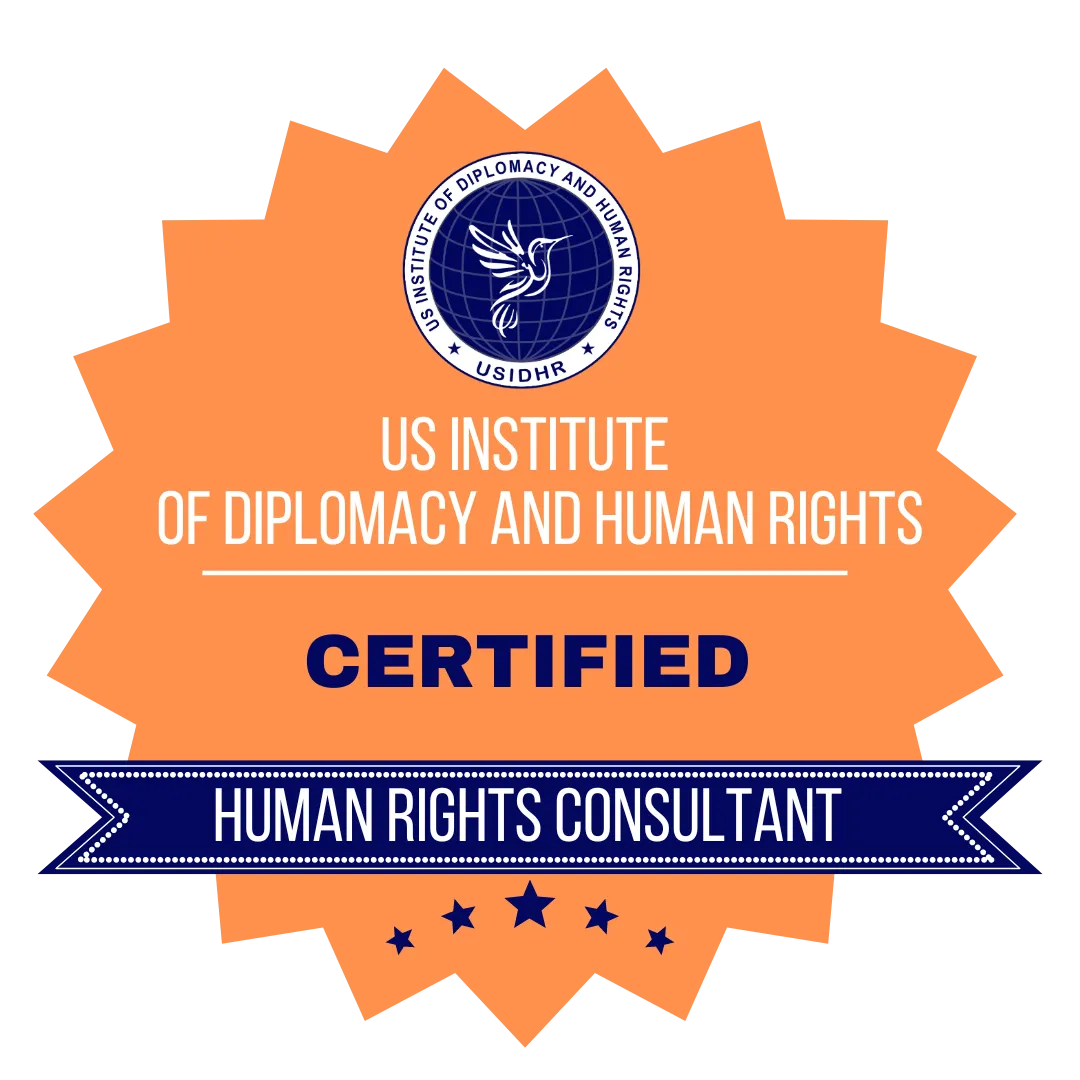
Human Rights Education Certification Training

Human Trafficking Certification
Training
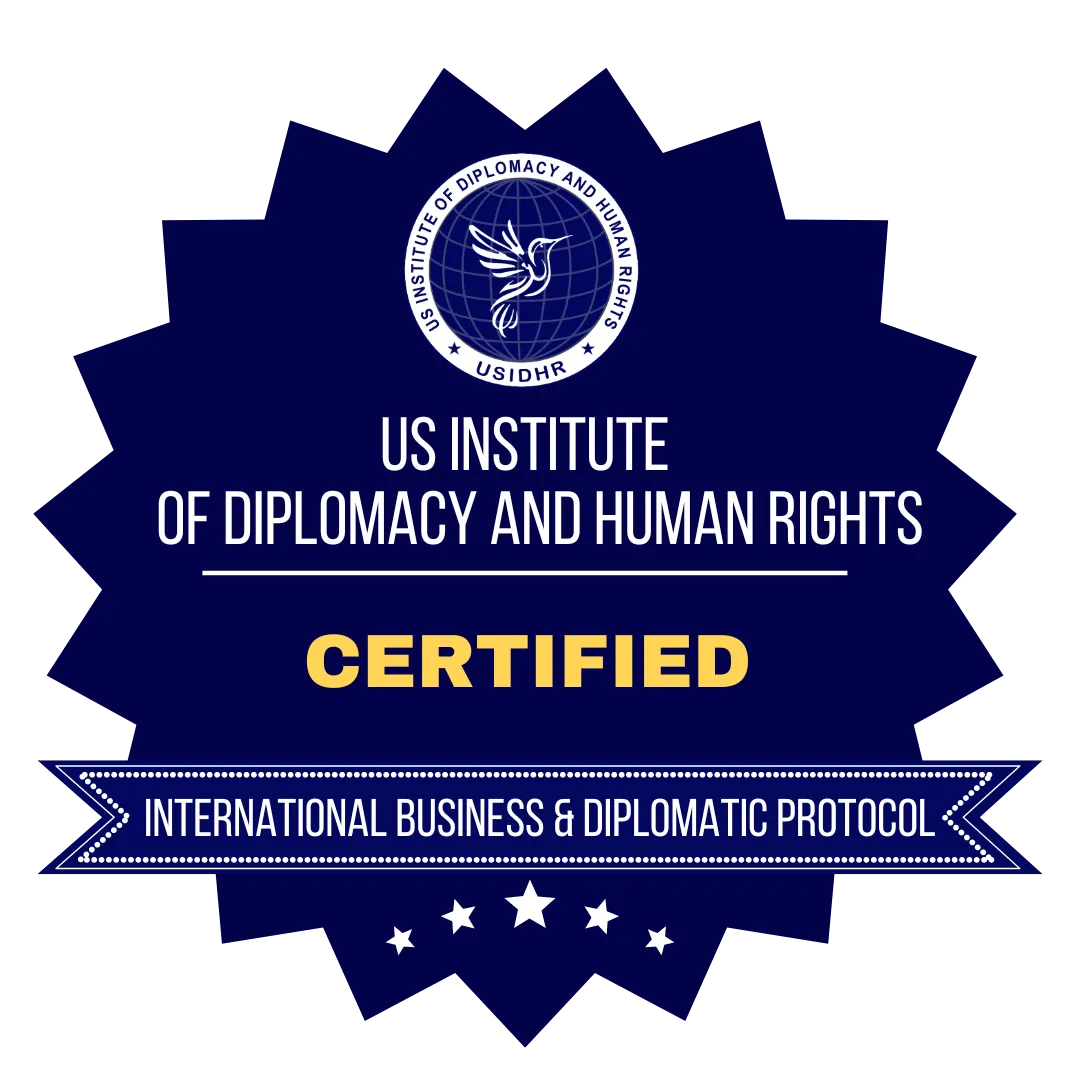
International Business and Diplomatic Protocol Certification
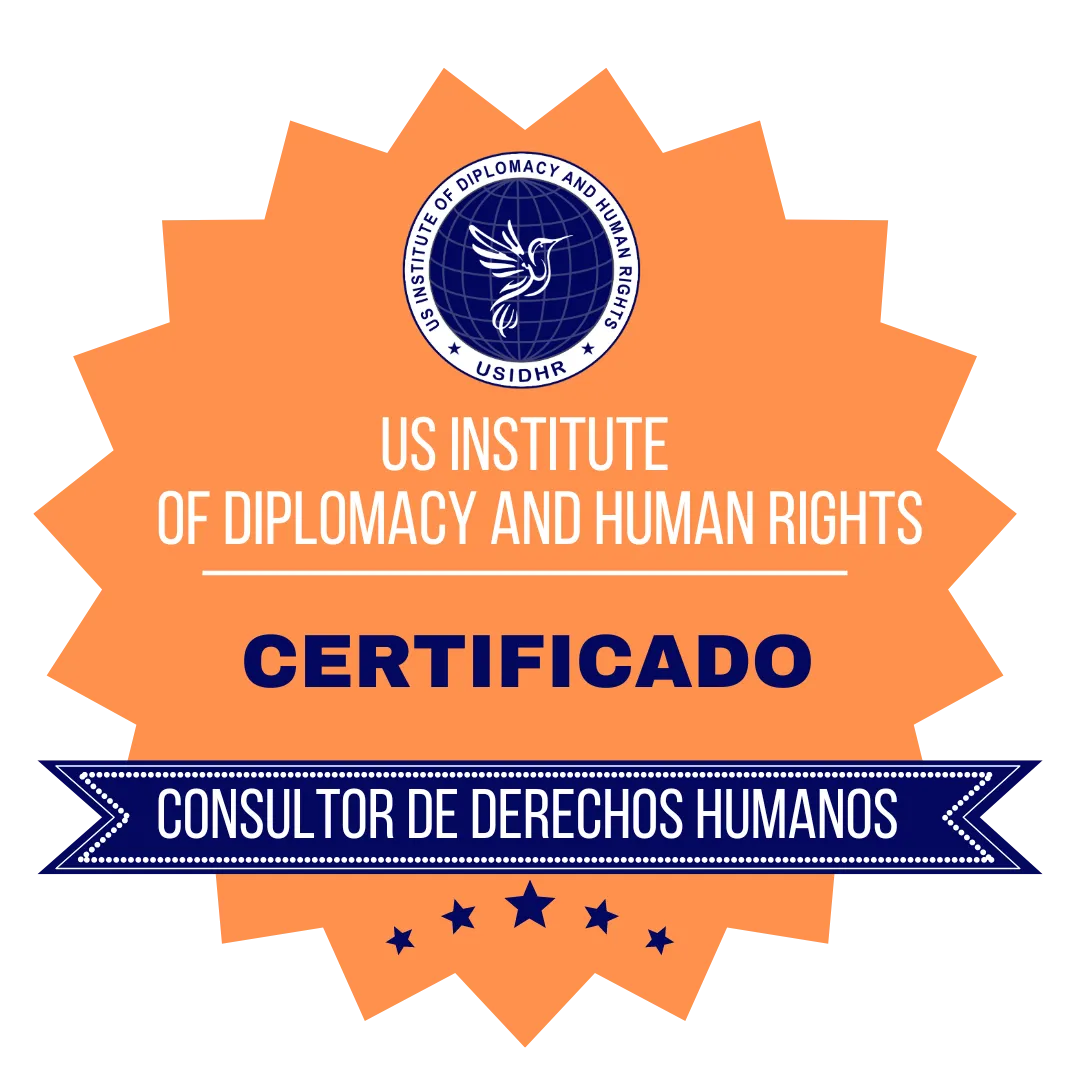
Capacitación En Derechos Humanos
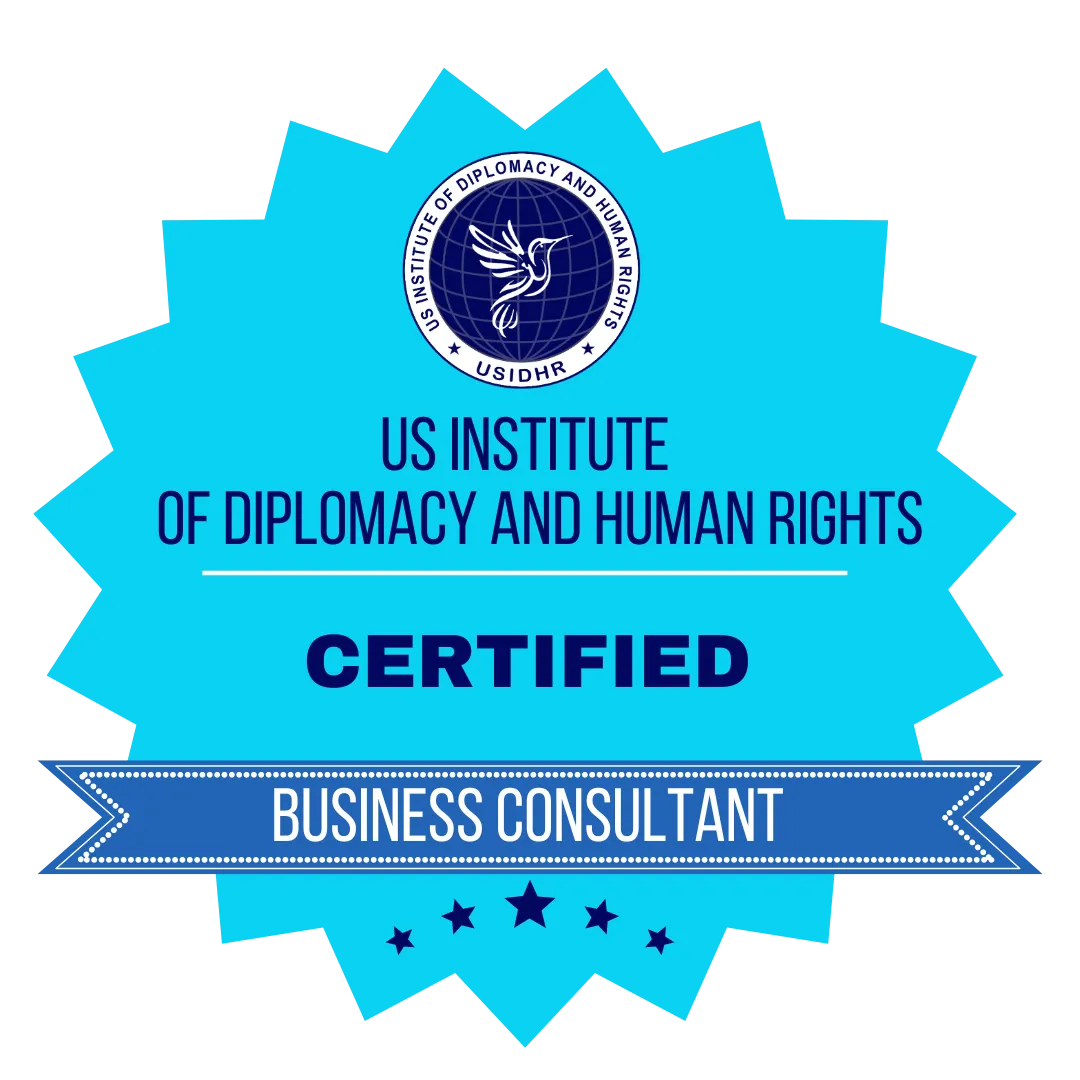
Business Consulting Certification Training
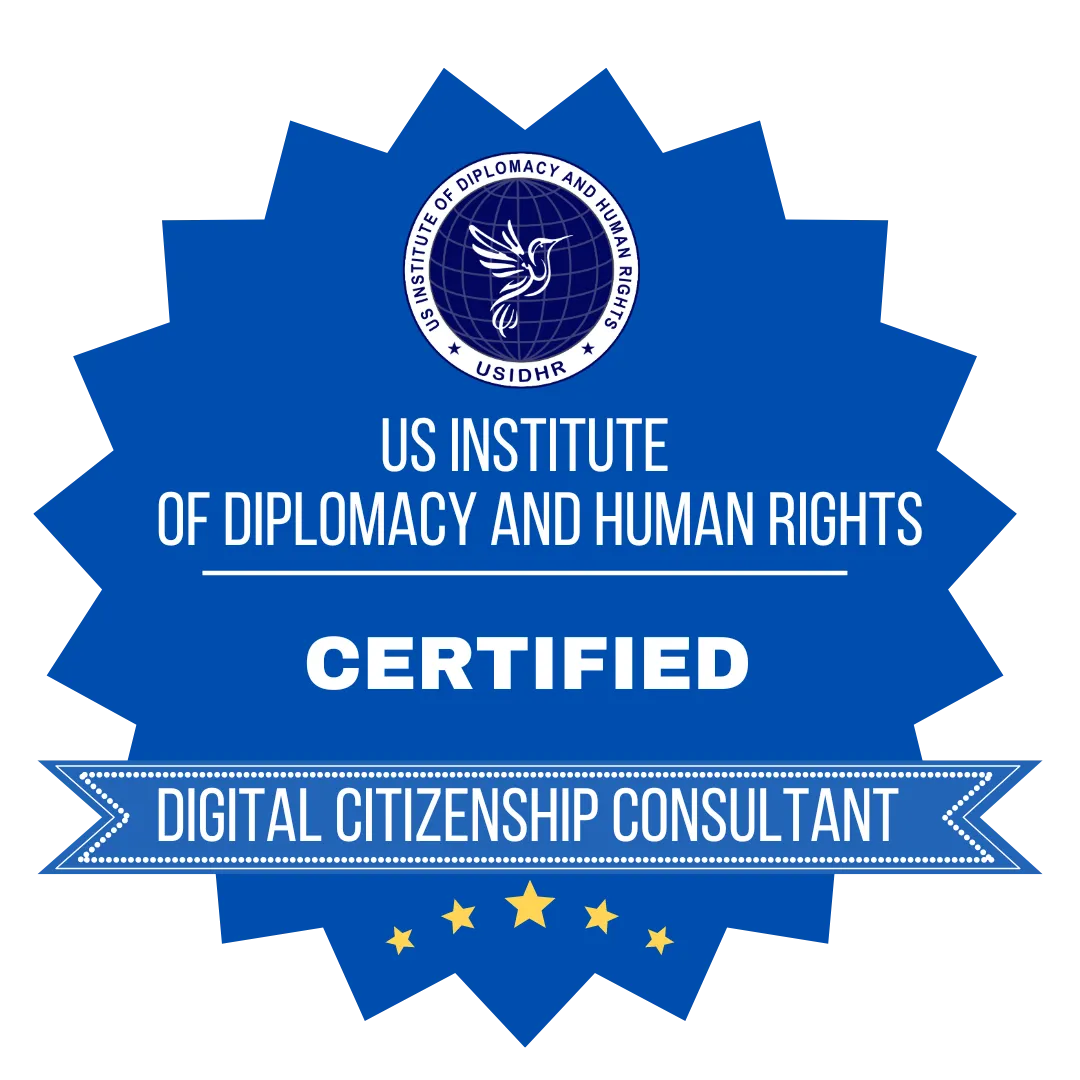
Digital Citizenship Certification
Training

The US Institute of Diplomacy and Human Rights (USIDHR) is an International Continuing Professional Development (CPD) Accredited Organization. Accredited CPD training means the learning activity has reached the required Continuing Professional Development standards and benchmarks. The learning value has been scrutinized to ensure integrity and quality. The CPD Certification Service provides recognized independent CPD accreditation compatible with global CPD requirements
US Institute Of Diplomacy And Human Rights
1250 Connecticut Ave NW Ste 700, Washington, DC 20036

